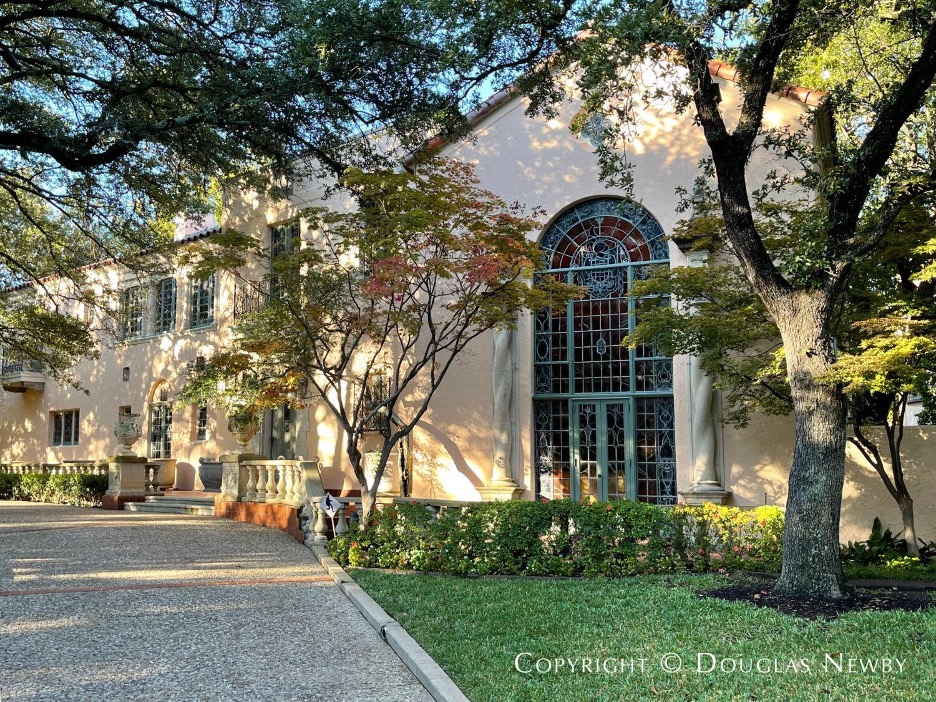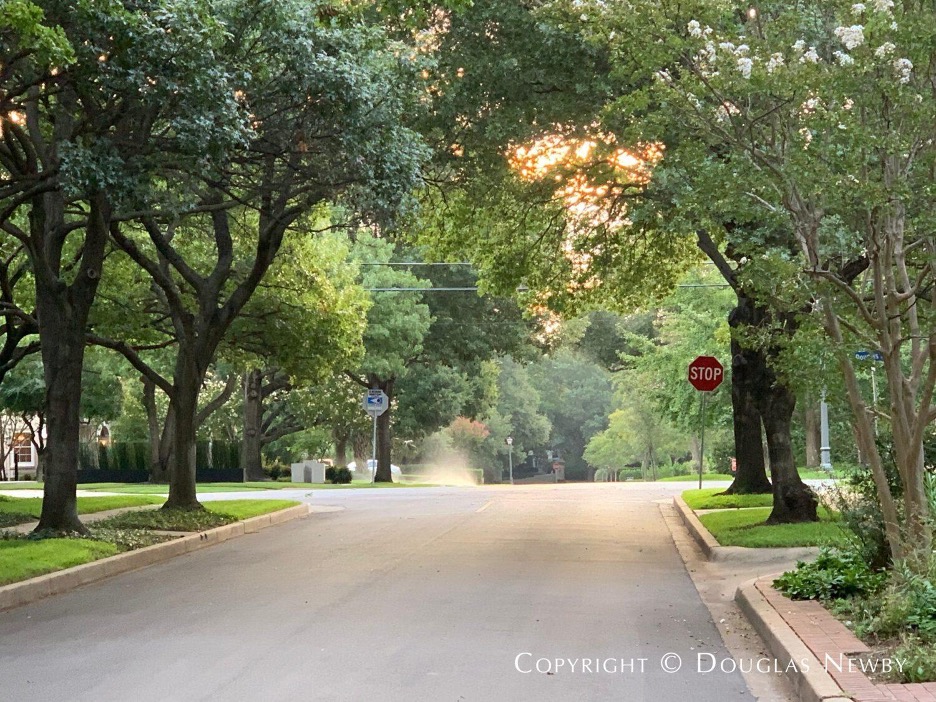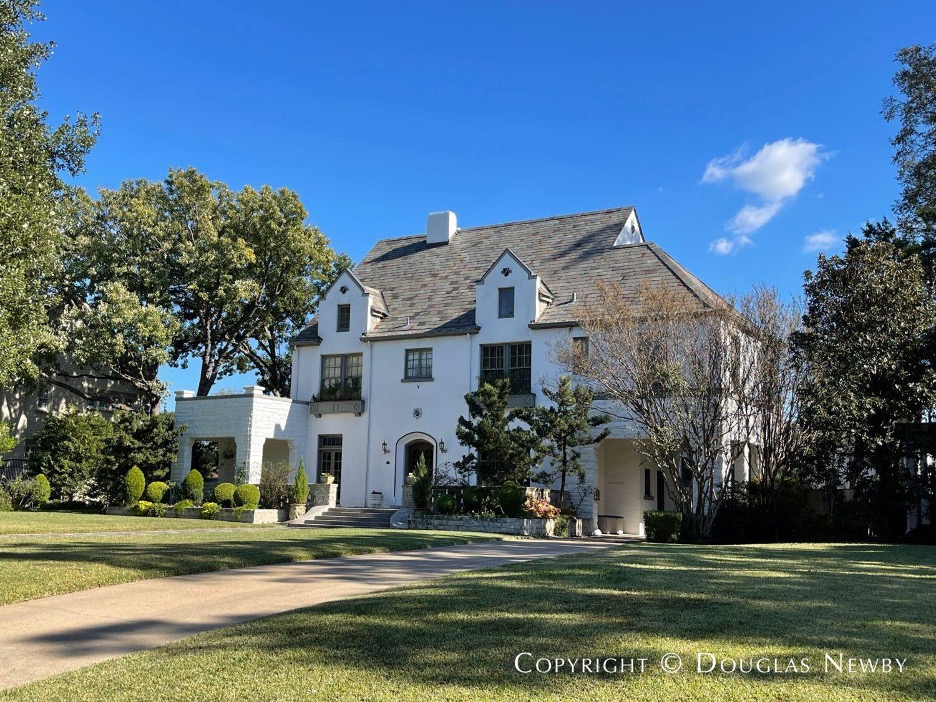
Some Confuse a Homeowner’s Greatest Property Right With How Many Uses the Homeowner can Utilize for Their Home
A homeowner’s greatest property right is not how many uses a homeowner can use their home, but neighborhood protection from uses not beneficial to single-family homes.
Dallas is Losing Homeowners
The city of Dallas is losing homeowners while this critical population moves further away. The health of Dallas is at risk as the number of homeowners in the city is declining and city becoming, like many elsewhere, essentially one of renters.
Short-Term Rentals (STRs), Neighborhood Apartments, Transience, and Instability Drive Homeowners Out of Dallas
It is both common sense and statistically true that homeowners prefer to live next door to other homeowners. This was first brought to my attention doing research for my Master’s Thesis, Economic Proposals to Promote Reverse Migration and to Revitalize an Inner City Neighborhood, in 1976 by Walter B. Bruggeman, in The Journal of Economics and Business, Volume 27, II, Page 41. Since then, as a residential real estate broker, I have heard hundreds of times homebuyers tell me they do not want to live next to an apartment house or complex, and renters say, they prefer to live in an apartment that is next to a homeowner rather than an apartment complex. If you want to rid the city of them, I insert density, transience, and short-term rentals. Any time a short-term rental goes in next door or on the block, there is a greater chance the homeowner will sell their home and move away from Dallas to safer, more stable communities. When a homeowner moves out, there’s a good chance they will sell to a short-term rental investor who will rent most likely to a short-term tenant. At the end of the day, as a result of STRs, there will still be fewer homeowners in Dallas. Dallas should be protecting and nurturing homeowners and homeowner’s greatest property right, not threatening them and ultimately destroying single-family Dallas neighborhoods with short-term rentals.
Dallas is Losing Population
Dallas is the strongest city in the country and the population in the Dallas region is booming, but the city of Dallas is losing population. In the Wall Street Journal article How Can Big Cities Get Us to Live There (Again)?, Justin Lahart cites the Brookings Institution’s census data that shows 42 of 48 core urban counties, including Dallas, lost population from July 2020 to July 2021.
Why Are People Leaving Dallas?
People are leaving the city of Dallas not because they do not like the world-renowned museums, Nasher Sculpture Center, celebrated restaurants or the fabulous people that live here. People leave Dallas for cities, suburbs, and towns that have neighborhoods that are more stable, safer, greener and more homeowner friendly.
“Between 2010 and 2020, the suburbs and exurbs of the major metropolitan areas gained two million net domestic migrants, while the urban core counties lost 2.7 million people.” Dallas needs to offer more of the single-family home appeal of suburbs, not less.
Renters also Prefer to Live Next Door to Single-Family Homes
Homeowners aren’t the only residents desiring to live next to homeowners. Renters also want to live next to homeowners. Every time a neighborhood is disrupted by another apartment or short-term rental, the attractiveness and quality of life of the entire area go down.
Single-Family Home Neighborhoods Add to Overall Quality of Life in Dallas

People love walking by and admiring the architecturally significant and historically significant home that architect John Allen Boyle designed in Highland Park.
One of most attractive single-family neighborhoods in the U.S. is Highland Park. Highland Park is known for protecting homeowner’s greatest property right – single-family zoning. Highland Park draws people, both homeowners and renters, from nearby Dallas neighborhoods to walk, run or ride their bikes through the tree-lined streets, enjoying the beautiful views of the architecturally significant homes and gorgeous parks.

Since Highland Park does not have any short term rentals, one can often ride their bike down the street without seeing any cars parked on the curb.
Dallas Single-Family Home Neighborhoods are a Magnet for Attracting People to Stay in Dallas or Move to Dallas
Whenever I have a friend or client that is visiting Dallas and I am giving them a wide overview of —Dallas neighborhoods, from estate homes in Preston Hollow to architecturally significant homes in Greenway Parks, they always remark to me how clean the city is. I explain the reason for this is that Dallas still has so many close-in neighborhoods in all price ranges that are zoned single-family. The city of Dallas should do everything possible to nurture these single-family home neighborhoods and not disrupt them.
Why Would Anyone Want Apartments or Short-Term Rentals in a Single-Family Home Neighborhood?
Knowing the importance of single-family home neighborhoods to Dallas, why would anyone want to threaten these neighborhoods with short-term rentals, apartments or rooming houses? The answer is simple. Those proposing short-term rentals in residential neighborhoods are motivated by ideology or short-term profits, rather than the long-term health of the neighborhood.
Here are four types of supporters of additional apartments and short-term rentals.
- Short-Term Rental Investors
Short-term rental investors also know that renters prefer renting in a single-family home neighborhood. The short-term rental property owners want to economically benefit from the lovely, safe homeowner neighborhoods that allow them to get a huge rent premium for their short-term rentals.
Short-Term Rental Owners Realize They have a Depleting Asset
Short-term rental owners realize that an STR investment is like investing in an oil well that is a gusher — spewing money at first, but eventually depleted. If a single-family home neighborhood like Northern Hills are filled with short-term rentals, the desirability of the neighborhood decreases, as do the rents, because homeowners and renters prefer to live next to single-family homes, not STRs.
Further, short-term renters are harder on properties than homeowners; Short-term renters are more likely to flush a diaper down a toilet, not drip the faucets during a hard freeze causing the pipes to break and massive water damage, not rushing back to close windows during a sudden rainstorm, wearing bicycle cleats on hardwood floors or scraping floors when moving around furniture, because short-term renters have no ownership interest or even the interest of a long-term tenant; as a result short-term rental houses deteriorate faster than single-family homes. Once the neighborhood or the house deteriorates past a certain point, the short-term rental owner can sell their property to a lower rent operator or tear down the house and sell to someone that will build a new rooming house, permitted as a single-family home, but with 10 rooms better suited for short-term rentals. Having received an ample return on their money in a few years, the short-term rental investor can just move on. They have no interest in the future of the neighborhood. - Density and Rental Advocates Generally Oppose Homeownership
 Adding density whether it is a new apartment complex, ADU, or a short term rental, never improves a neighborhood.
Adding density whether it is a new apartment complex, ADU, or a short term rental, never improves a neighborhood.
Density and rental house advocates generally oppose homeownership. Sure, this group generally owns homes themselves, as do their friends; however, density advocates prefer Dallas to be a city of renters. Fifty years ago, nationally acclaimed Dallas urban planners and even preservationists were touting “mixed-use zoning” over single-family zoning. Then, 15 years ago, international designers were brought to Dallas to join Dallas planners advocating “gentle density,” adding apartments to single-family homes. Five years ago, ADUs (Additional Dwelling Units) were the rage with planners and housing officials. Now, the anti-homeownership group is calling for more density and elimination of single-family homes “equitable zoning” and “affordable housing.” Equitable zoning is really just another name for multiple dwelling units built on a single-family lot. In California, Oregon and Minneapolis, they still call it single-family zoning, but they allow four separate dwellings on small city lots.
The Anti-Homeownership Pro-Density Group Likes Short-Term Rentals
The anti-homeownership group likes short-term rentals because homeowners are replaced with absentee owners who carve up the homes into apartments for short-term rentals. This pro-density group thinks homeownership is wasteful, inequitable and does not conform to their view of city planning and the future of cities. - Fixed-Rail Mass Transportation Advocates Oppose Single-Family Homes
It has long been known that urban fixed-rail mass transportation can only be successful if the neighborhood has enough density. As a result, the fixed-rail advocates want to eliminate single-family zoning and replace homes with apartments and short-term rentals so more people will use a fixed-rail mode of transportation.
19th Century Technology of Fixed-Rail in Dallas Cannot be Saved by More Apartments
Building more apartments in modern cities to support the 19th century technology of fixed-rail trains makes as much sense as it does to build more apartments to support more fixed-line telephone booths on every corner. People in the 21st century do not want to go to a fixed location telephone booth to make a call. People do not want to go to a fixed location, at a fixed time, to travel to a fixed destination. People in this century value freedom and flexibility. Uber, autonomous vehicles, and a host of other innovations make urban fixed rail in a modern city look silly and the mobility it offers anemic. By the way, everyone I have spoken to at North Texas Council Government, the Dallas City Council, or a DART Board Member, have been reluctant to tell me what is the cost per passenger mile for DART ridership. Wendell Cox, the Principal of Demographia, located in St. Louis MO-IL metropolitan area, calculates from DART documents that the DART cost per passenger mile in 2021 is $5.75. This is almost ten times more expensive than the $0.55 to $0.83 cost per average car vehicle mile. The cost per passenger mile in a car is even less than vehicle mile since many vehicles have more than one passenger. DART ridership has been further reduced in the last two months of 2022, which will indicate a trend of further increases in the cost per DART passenger mile. It is no wonder when the cost per passenger mile for mass transit in Dallas is so high, those involved with DART have been reluctant to share this figure.
Fixed-Rail Mass Transit Ridership is Down 60% - Rail Riding Into Oblivion
Randal O’Toole, a transportation analyst, in his article Transit’s Existential Crisis, published both in NewGeography.com and The Antiplanner, cited statistics that support the idea that it is time to end public funding for fixed-rail in Dallas and other cities. He brought up that New York transit ridership is down 60% from pre-pandemic levels. Further, he discusses a November 2020 report from McKinsey & Co. suggesting that transit ridership would recover to as high as 92% of pre-pandemic levels by 2025, but now they have revised that number downward to 70%, and that is looking too optimistic, as ridership has been flat or declining since February. New York has always been the poster city for how fixed-rail mass transit works. It is now not working in New York and other less dense cities across the country. Many still argue that regardless of the cost, mass transit is an environmentally friendlier way to travel. Even this idea is a hopeful myth. Randal O’Toole also points out that New York transit is thought to produce far more greenhouse gases per passenger mile than many private automobiles. He asks the question I do: “Why should we continue to fund transit when ridership is down by 60% from pre-pandemic levels?” - Subsidized Apartment Developers Oppose Single-Family Zoning
Developers want as many opportunities as possible to receive government money to build apartments. These developers get their tax credits, subsidies and profits on the front-end of their investments. Developers play on the trending “affordable housing” and “equitable zoning” mantra so they can continue to be subsidized to build “low and mixed-income” apartments. Few stable neighborhoods, black or white, rich or poor, wants low or mixed-income apartments in their neighborhood. The subsidized developers usually abandon their projects after several years once the developer has obtained a profit and their projects have fallen into disrepair. That’s why retired city planner and architect Darryl Baker has sued the city for dumping low-income and mixed-income apartments in Southern Dallas City Council District 3 where the neighborhood desires quality single-family homes to be built.
Adding Density to Single-Family Neighborhoods Has an Ugly Racist Past
Now the city of Dallas is dumping low and mixed-income apartments into Southern Dallas neighborhoods, when Southern Dallas homeowners want a homeowner’s greatest property right – single-family zoning. Author Howard Husock, in his book, The Poor Side of Town and Why We Need It, describes how early white leadership of cities and towns protected white neighborhoods with single-family zoning but allowed apartments and other harmful uses in black single-family home neighborhoods. The hidden truth is that redlining was as much as the neighborhood having apartment zoning and bad uses than the skin color of residents. The added density and bad uses also caused these neighborhoods to deteriorate more, just like the density and bad uses made expensive white neighborhoods, like Munger Place in Old East Dallas, deteriorate and end up redlined. Whether density was added in other cities in the 1800s, or when the Dallas City Council under Mayor Wallace Savage in 1950 blanket-zoned Old East Dallas multi-family, the results were the same. Adding density destroys neighborhoods.
Single-Family Zoning Saves Neighborhoods
Dallas Mayor (1976-1981) Robert Folsom, who campaigned on property rights, recognized that this 1950 multi-family zoning mistake in Old East Dallas could only be corrected by returning this deteriorated neighborhood back to single-family zoning. He positively responded to the super-majority of the 2,000 property owners in a 100-block area petitioning to have the entire area rezoned single-family. Once the zoning was changed to single family, FNMA made their first inner city loans in the country here, and there has since been a billion dollars’ worth of single-family home renovation in this 100-block area.
Is Dallas Still a Property Rights City?
Dallas has a long history as a city that values and protects property rights. This is the reason the city leadership passed the single-family zoning in Old East Dallas over the objection of the planning department and the non-homeowning Mayor Pro Tem, who were promoting density. The mayor and the city council responded to the desires of the property owners. Will the current mayor and city council respond to the desires of the 500,000 homeowners who desire to keep their neighborhoods zoned single-family without the intrusion of short-term rentals?
Does any Dallas Neighborhood have a Super-Majority of Homeowners Requesting STRs to be Allowed in Their Neighborhood?
If City Council desires to allow STRs in a residential neighborhood, then the Council should, at the very least, require a super-majority of the property owners in that neighborhood to make a written petition request for their neighborhood to be rezoned STR. If 45 years ago we could obtain written mailed-in petition requests from 70% of the property owners to change the zoning back to single-family from multi-family zoning, then STR advocates should meet the same high bar. They should be required to get 70% of the property owners in a neighborhood to request their preference to live in a neighborhood of STRs instead of single-family homes.
Single-Family Zoning, Homeowner’s Greatest Property Right, Has Been the Secret Sauce of Dallas Success
Dallas neighborhoods are clean and green because they are predominately zoned for single-family homes. Protecting our single-family home zoning in Dallas will be out of step with the rest of the country, but right in step with our past and future Dallas success.

In 1905 Munger Place was created on the foundation of single-family zoning and the requirement that every home was architect designed. The disastrous effect of the multi-family rezoning in the 1950’s was reversed in the 1970’s with rezoning the neighborhood back to single-family. The future of Dallas neighborhoods is still single-family zoning.
Douglas Newby is a national award-wining real estate broker who writes about real estate, cities, architecture and Organic Urbansim. He gave the TEDx Talk Homes That Make Us Happy. You can read more about him and his work on his website Architecturally SignificantHomes: DougNewby.com and on his blog DouglasNewby.com.
Lead photo: A homeowner’s greatest property right is the certainty of having a single-family home next door. Single-family zoning is the most important property right, as it protects homeowners from bad uses next door or in the neighborhood. In the 1970’s, this block was 100% short term rentals which made it classified by the city as the worst neighborhood in Dallas. Single-family rezoning reversed the trend of destruction., by author.












